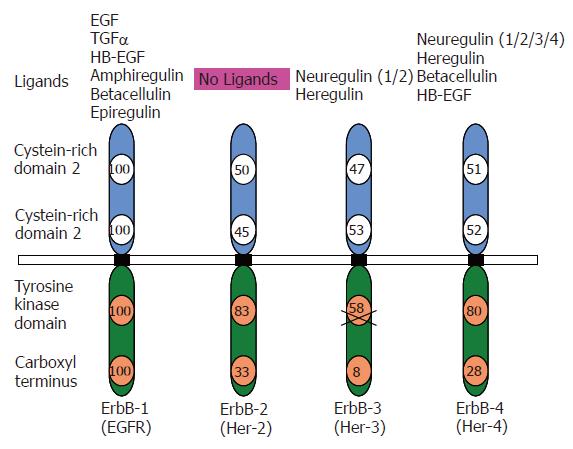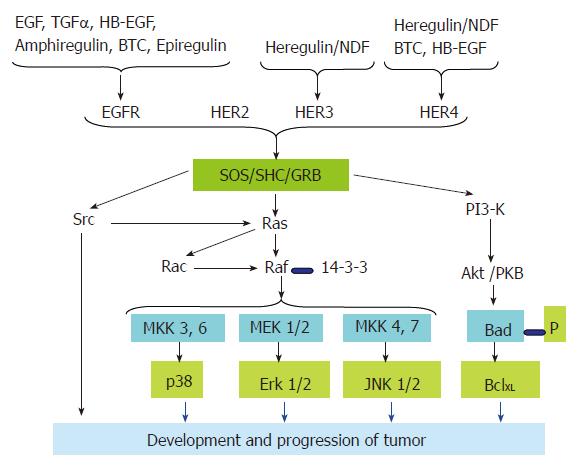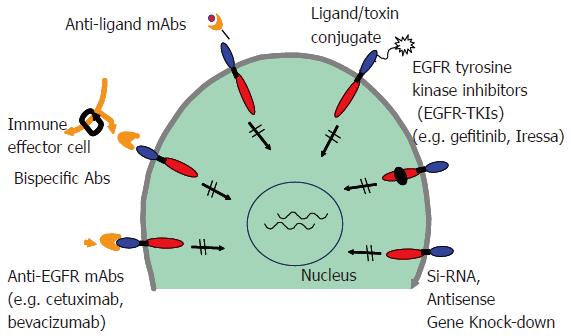Copyright
©2006 Baishideng Publishing Group Co.
World J Gastroenterol. Dec 14, 2006; 12(46): 7440-7450
Published online Dec 14, 2006. doi: 10.3748/wjg.v12.i46.7440
Published online Dec 14, 2006. doi: 10.3748/wjg.v12.i46.7440
Figure 1 Schematic representation of the four ErbB family members and their respective ligands.
The numbers depict percentage homology of each domain relative to EGFR/ErbB-1. There are no known ligands for ErbB-2 and the tyrosine kinase domain is non-functional in ErbB-3, as marked with a cross.
Figure 2 Schematic representations of different ErbBs/EGFRs ligand-induced signaling pathways leading to development and progression of tumors.
BTC: betacellulin; EGF: Epidermal growth factor; EGFR: Epidermal growth factor receptor; ERK: Extracellular signal regulated protein kinase; HB-EGF: heparin binding-EGF; Grb: Growth factor receptor receptor binding protein; JNK: c-Jun N-Terminal kinase; MEK: Mitogen activated protein kinase kinase; NDF: neu differentiation factors (also called neuregulins); PI3K: Phosphoinositide-3-kinase; PKB: Protein kinase B; SOS: Son of sevenless;TGF-α: transforming growth factor α.
Figure 3 Different strategies to inhibit EGFRs signaling.
mAbs: monoclonal antibodies; siRNA: small interfering ribonucleic acid.
Figure 4 Schematic representation of the comparison of ERRP structure with EGFR (A) and hypothetical mechanism of action of ERRP (B).
EGFR: Epidermal growth factor receptor; ERRP: Epidermal growth factor receptor-related protein.
- Citation: Nautiyal J, Rishi AK, Majumdar AP. Emerging therapies in gastrointestinal cancers. World J Gastroenterol 2006; 12(46): 7440-7450
- URL: https://www.wjgnet.com/1007-9327/full/v12/i46/7440.htm
- DOI: https://dx.doi.org/10.3748/wjg.v12.i46.7440
















